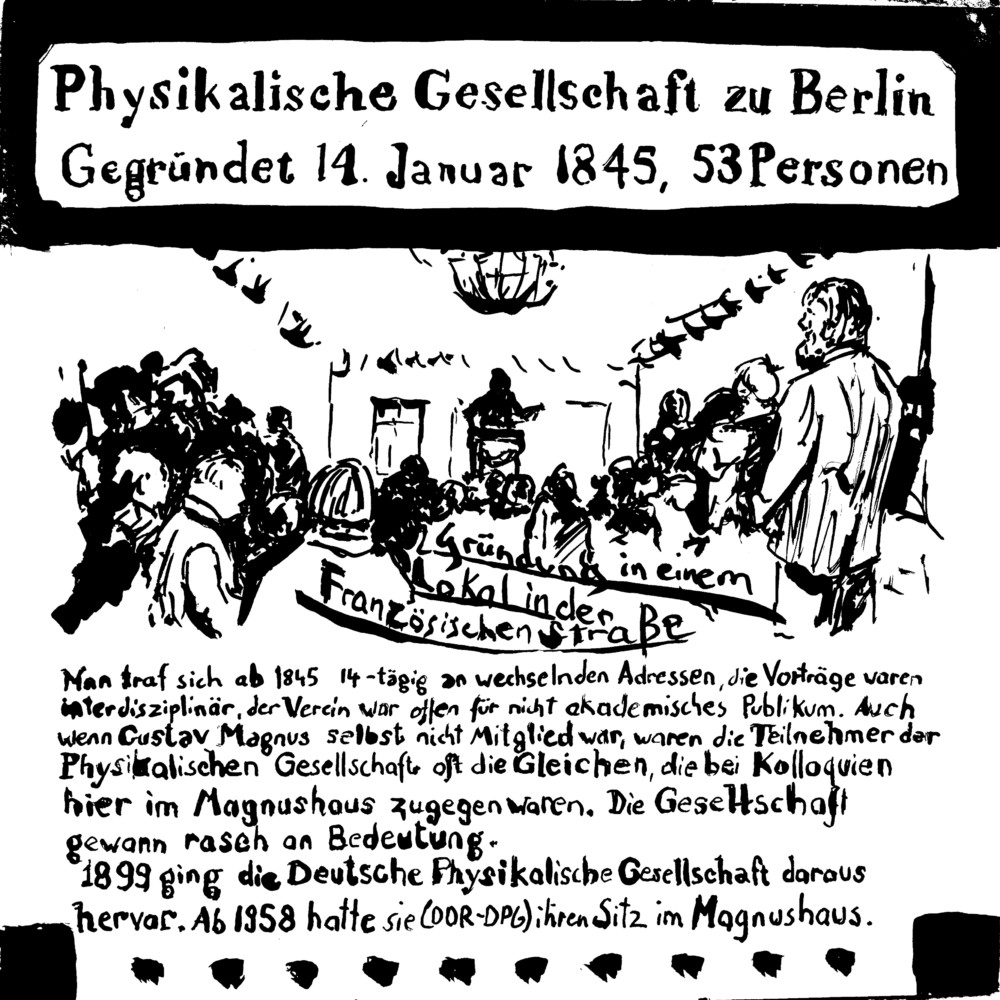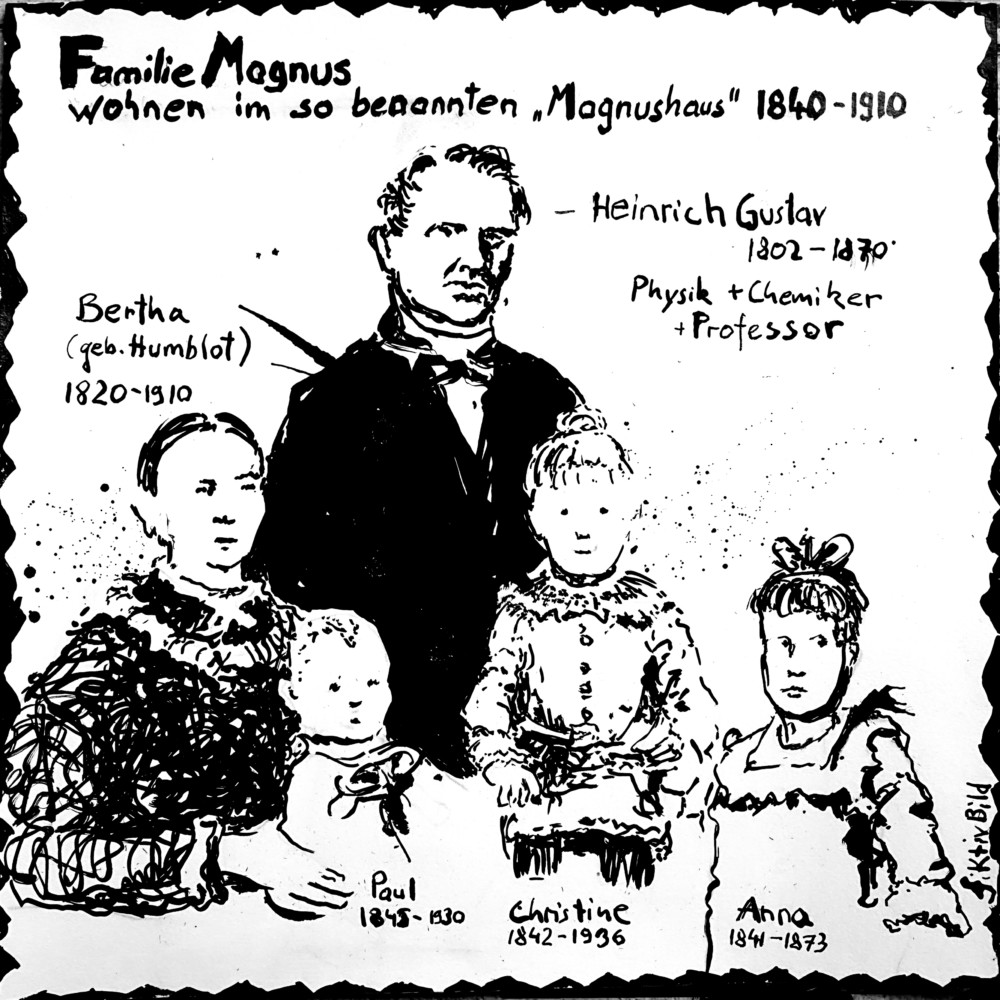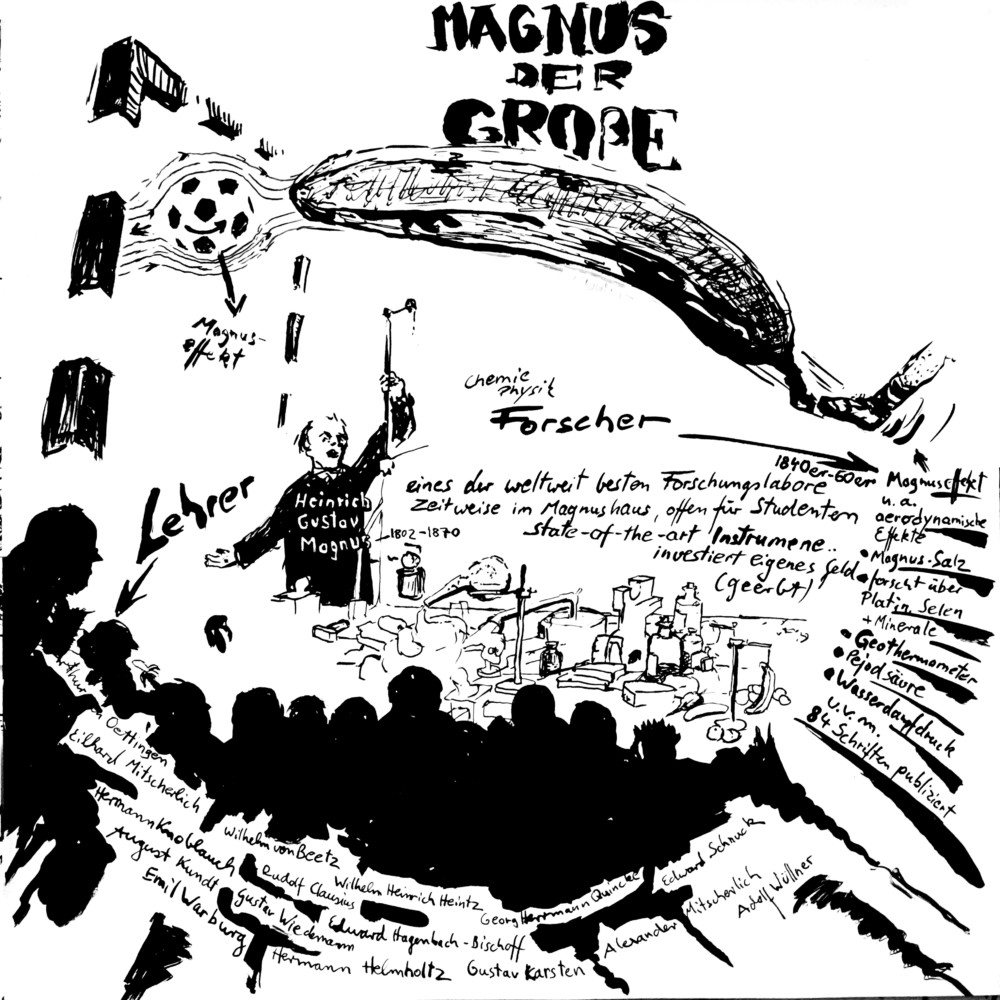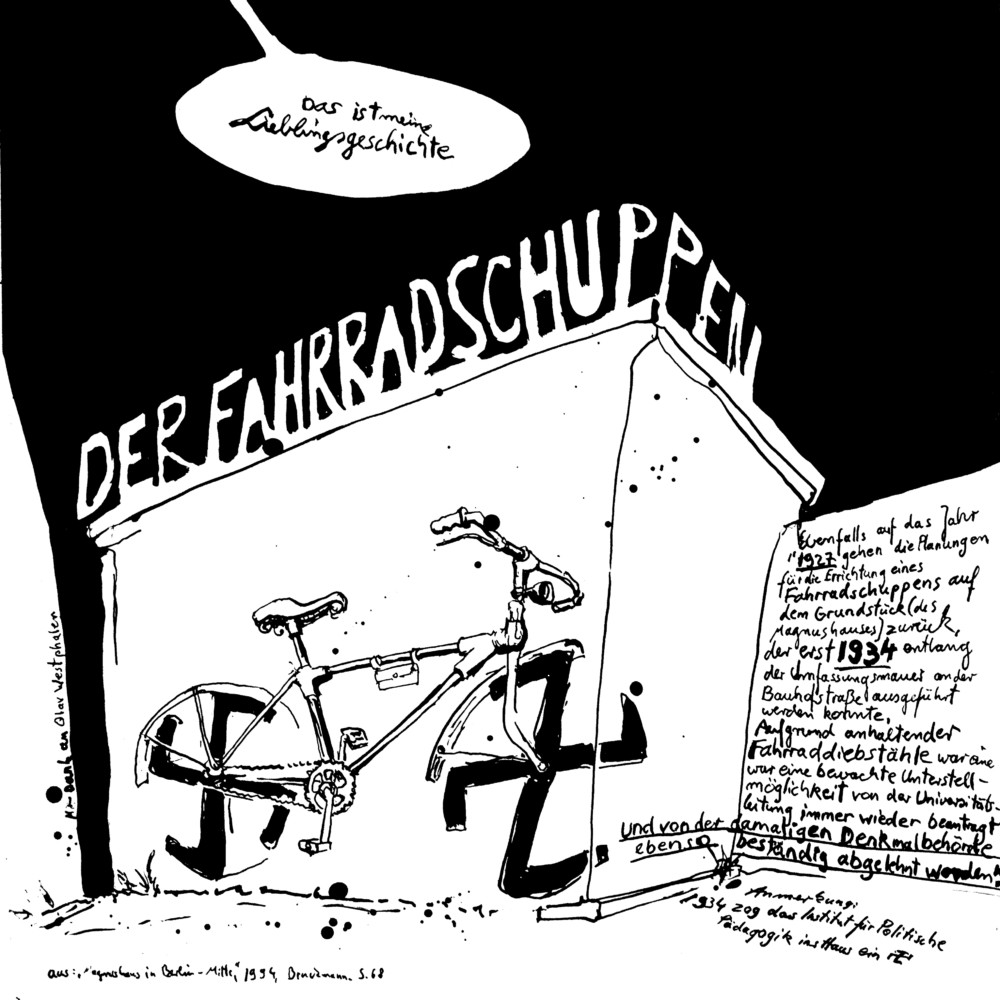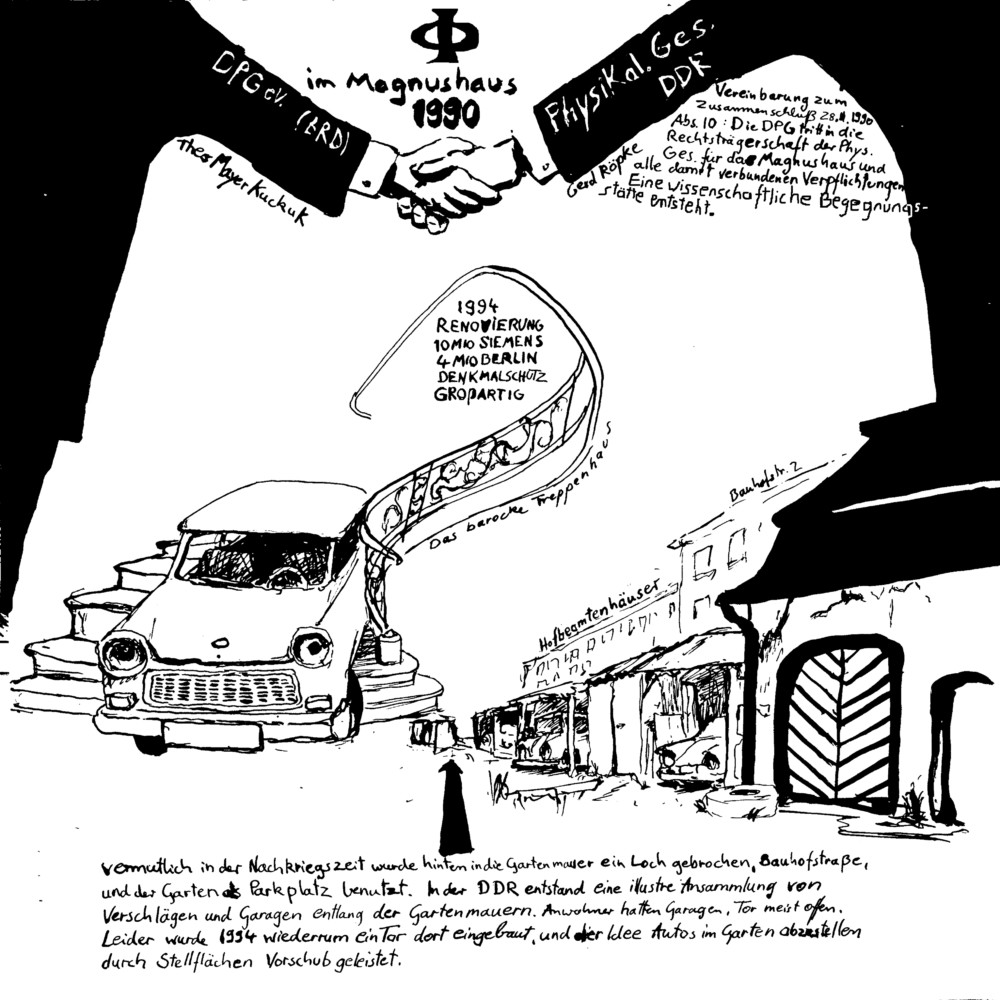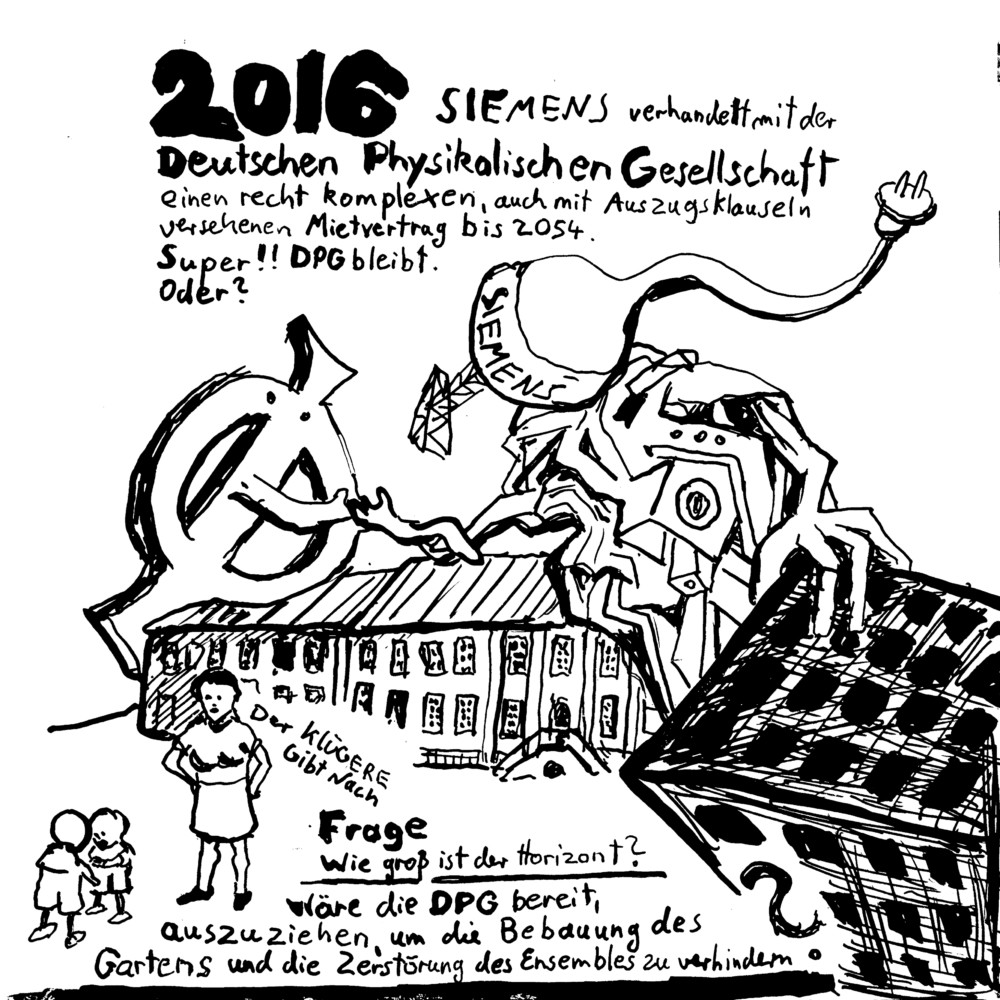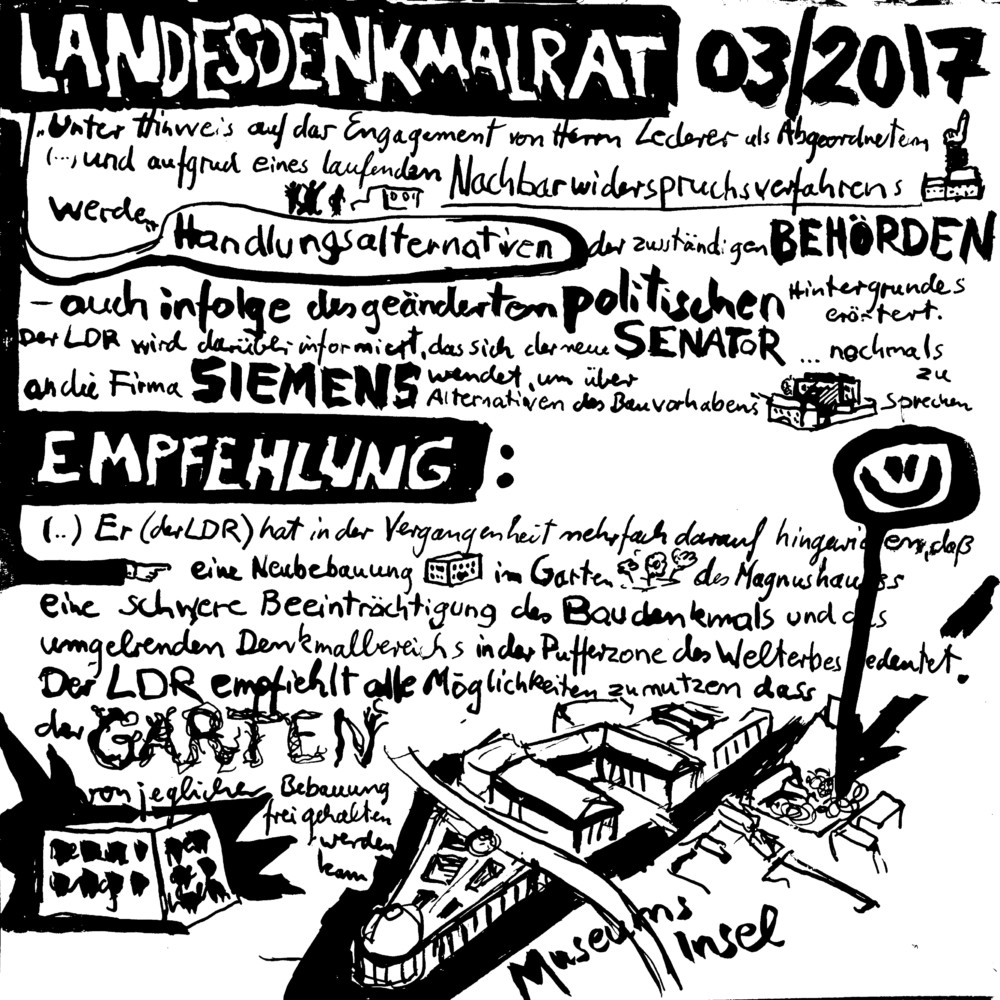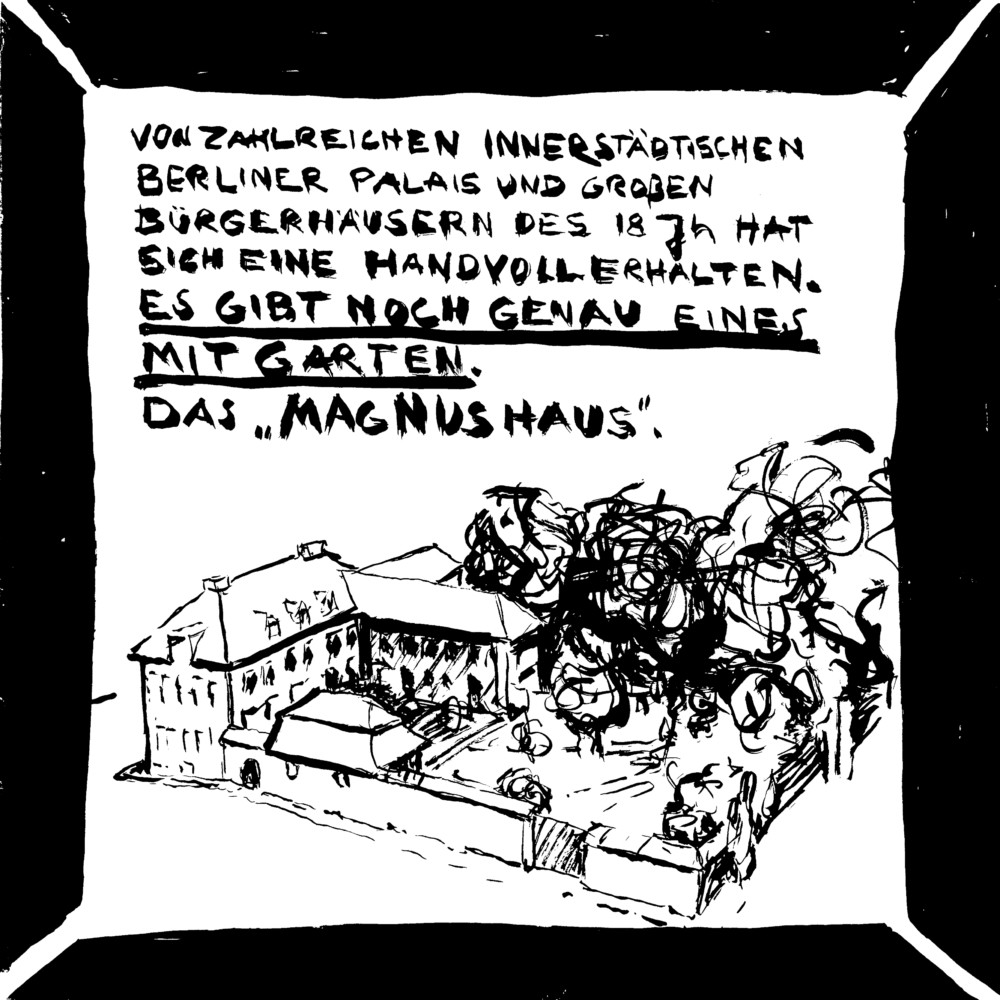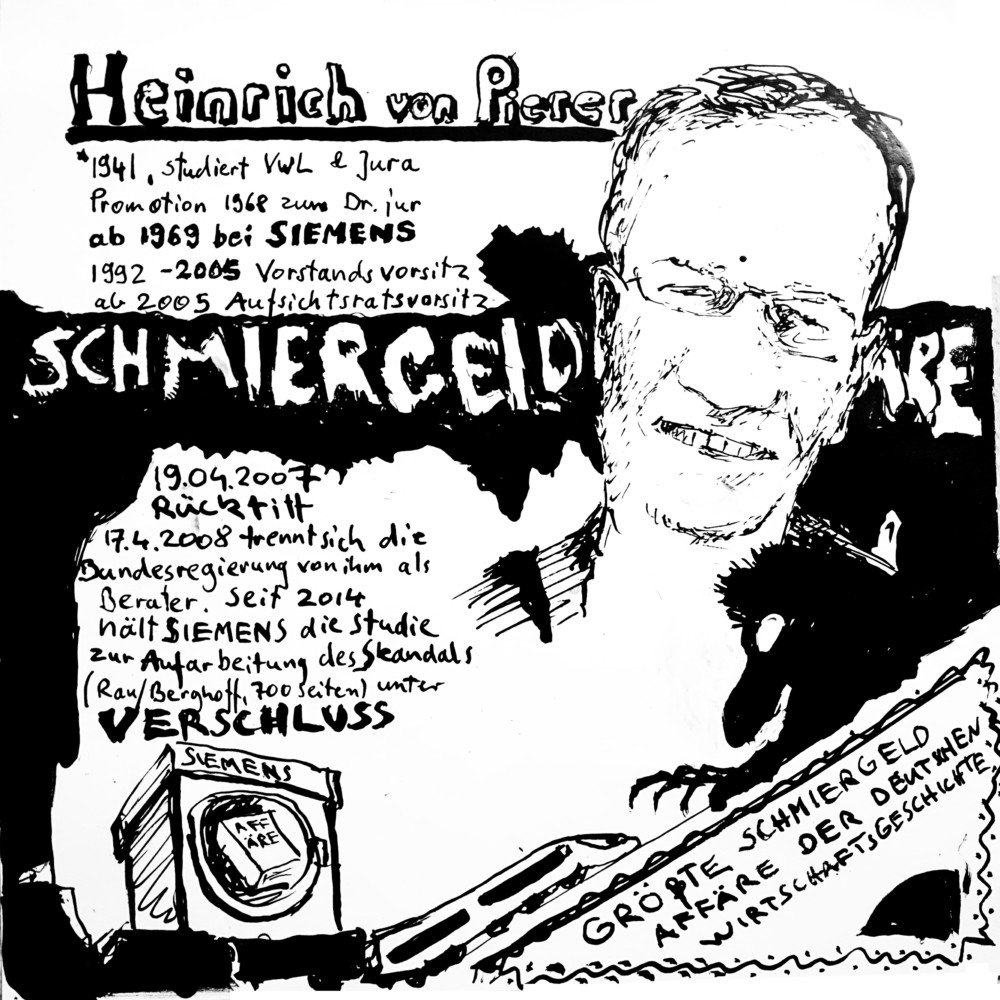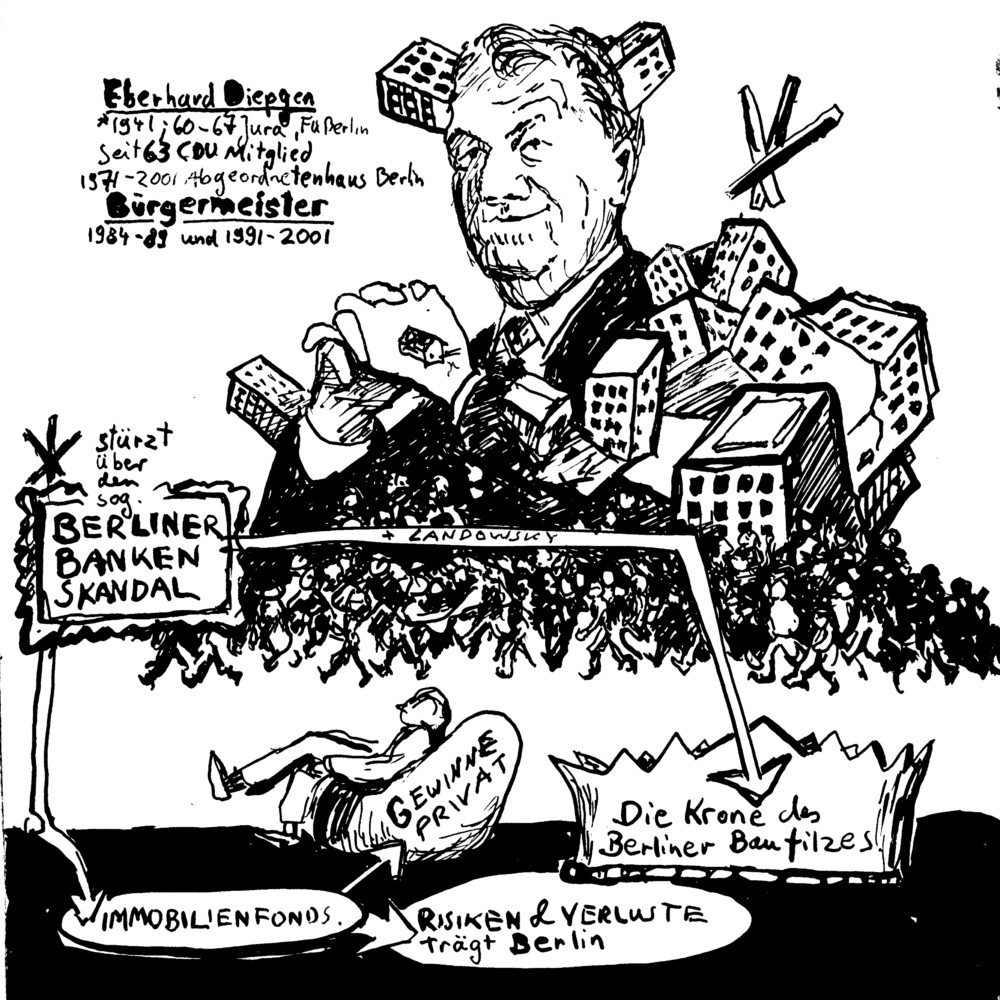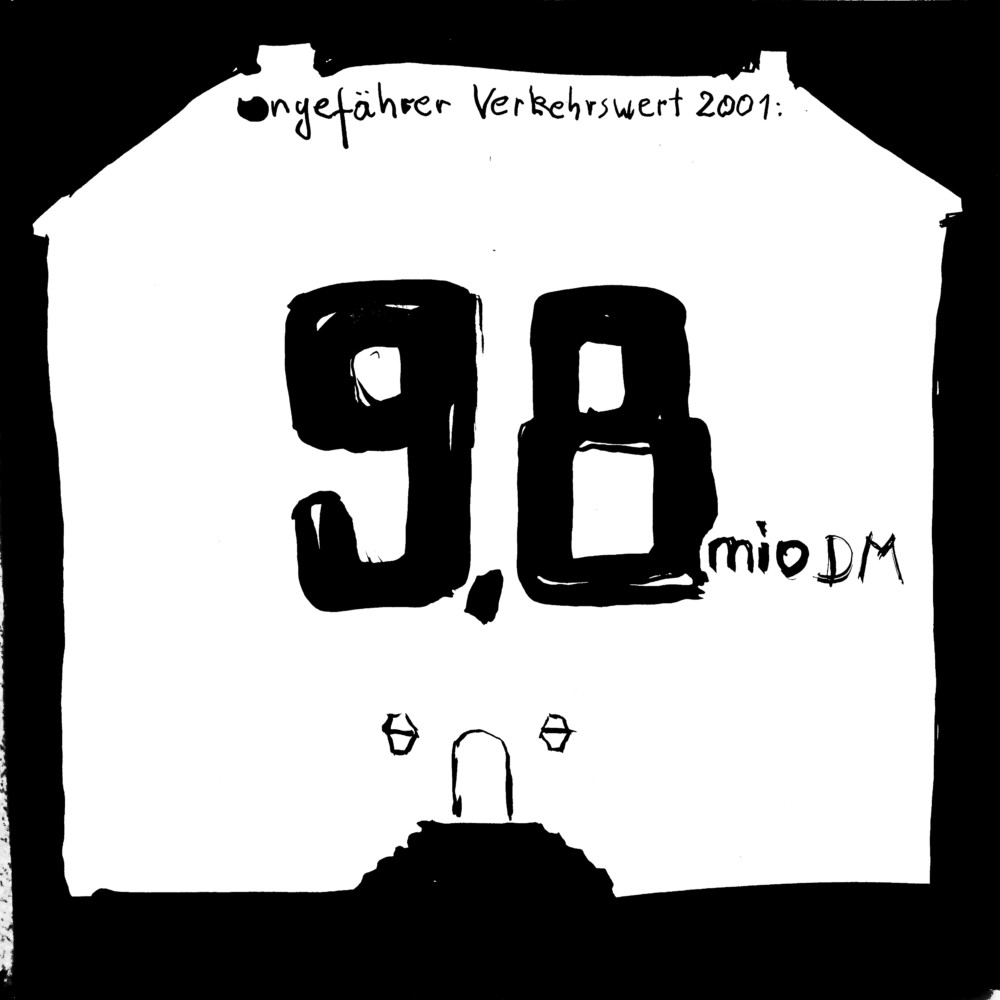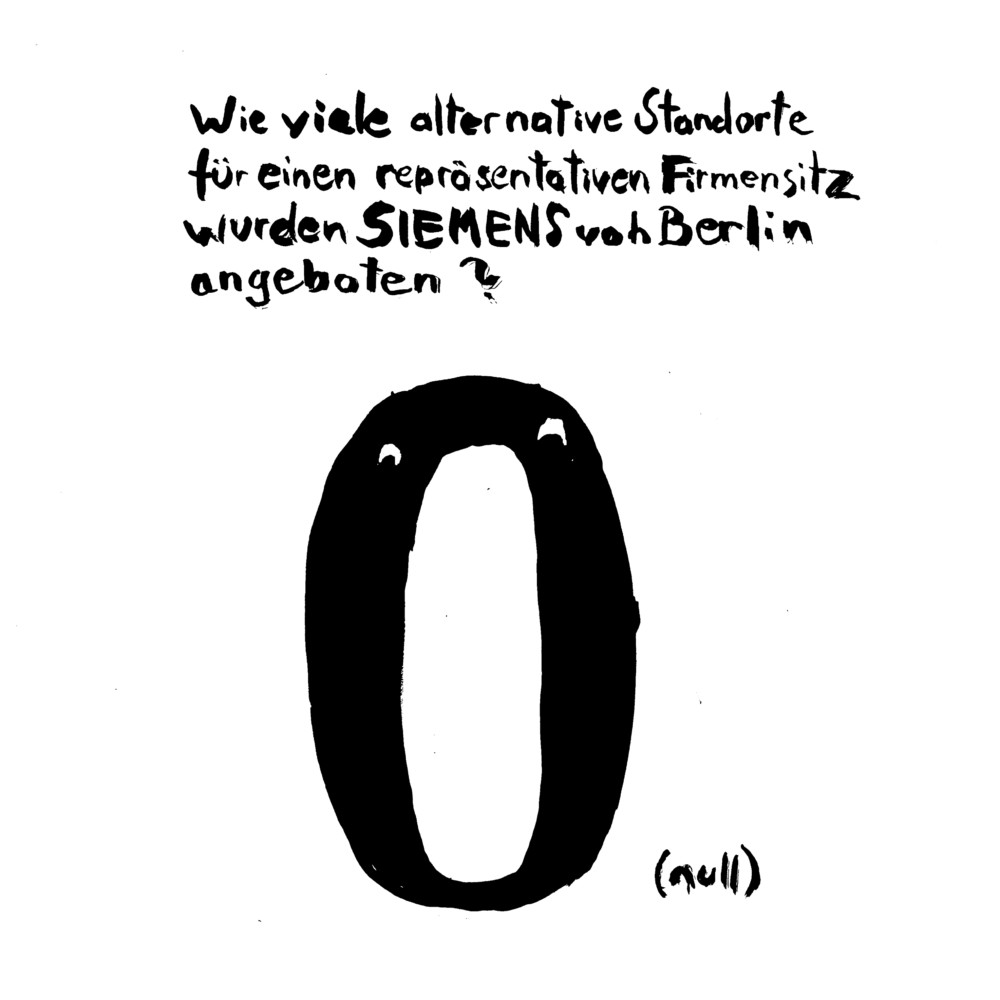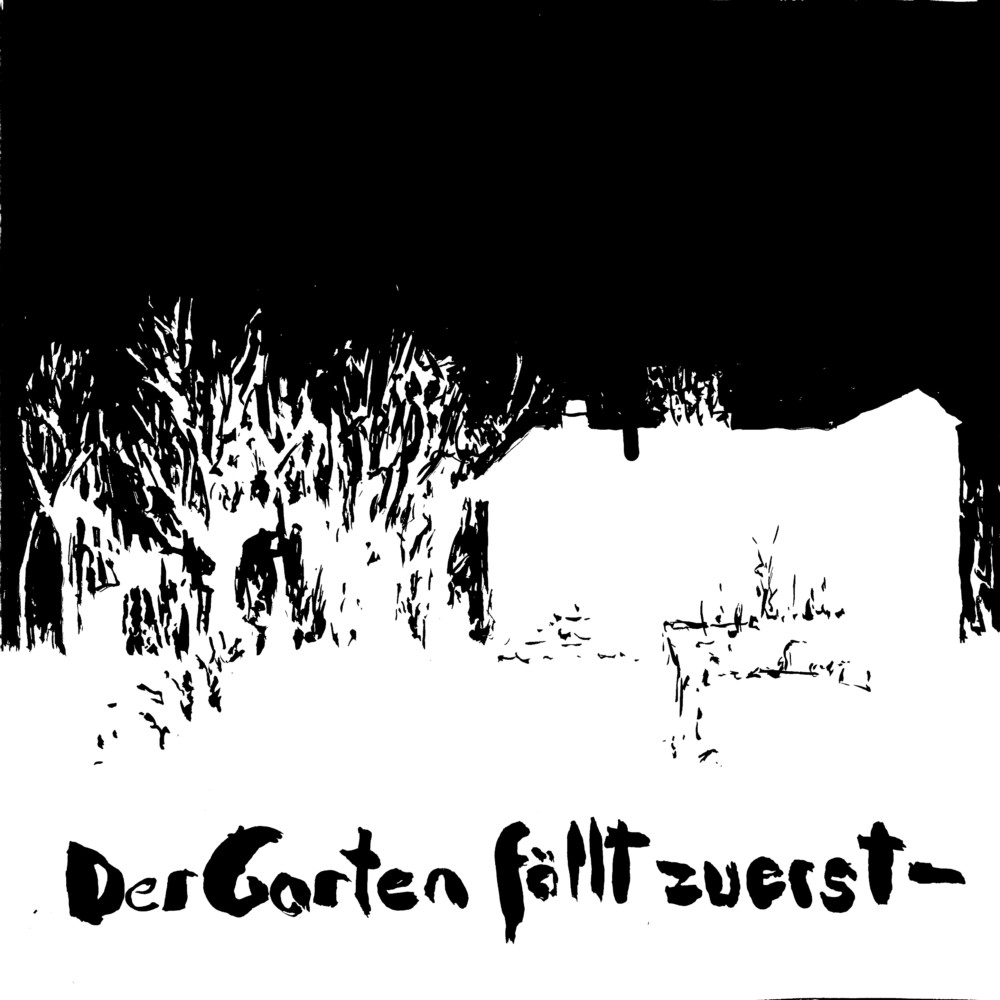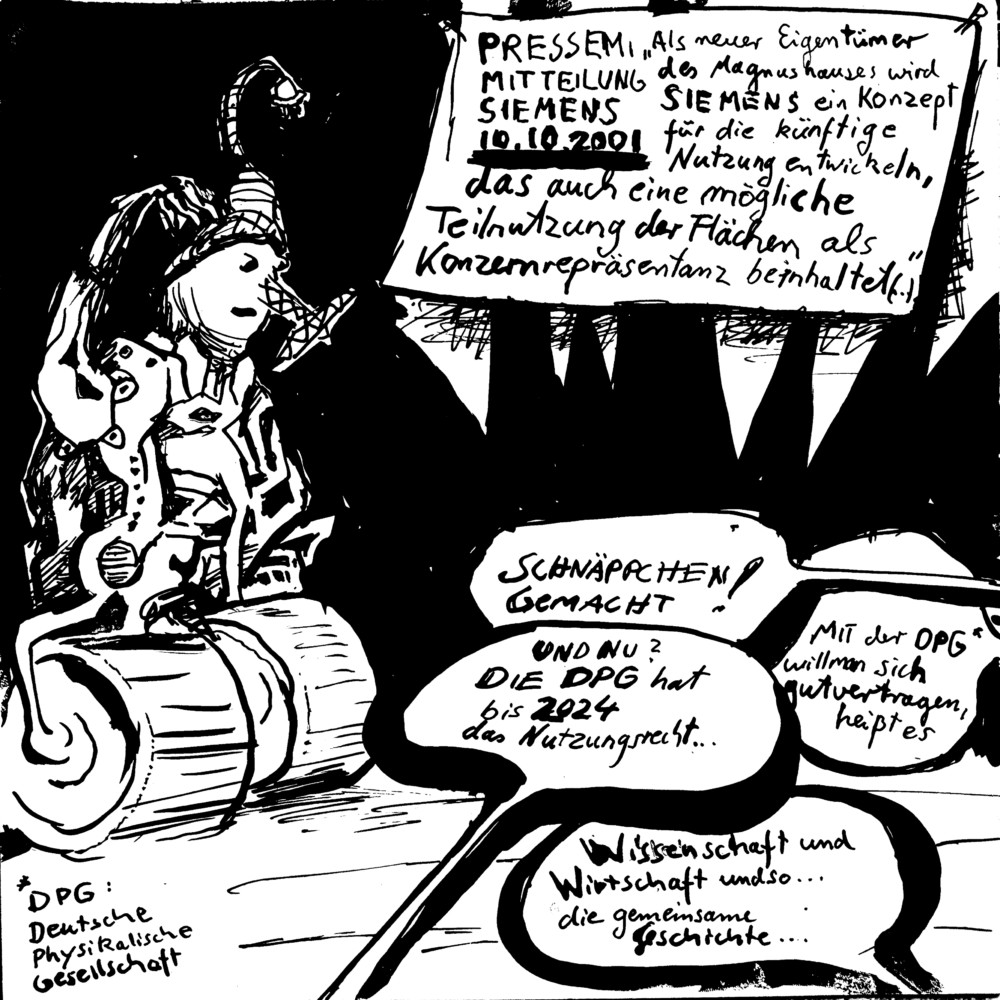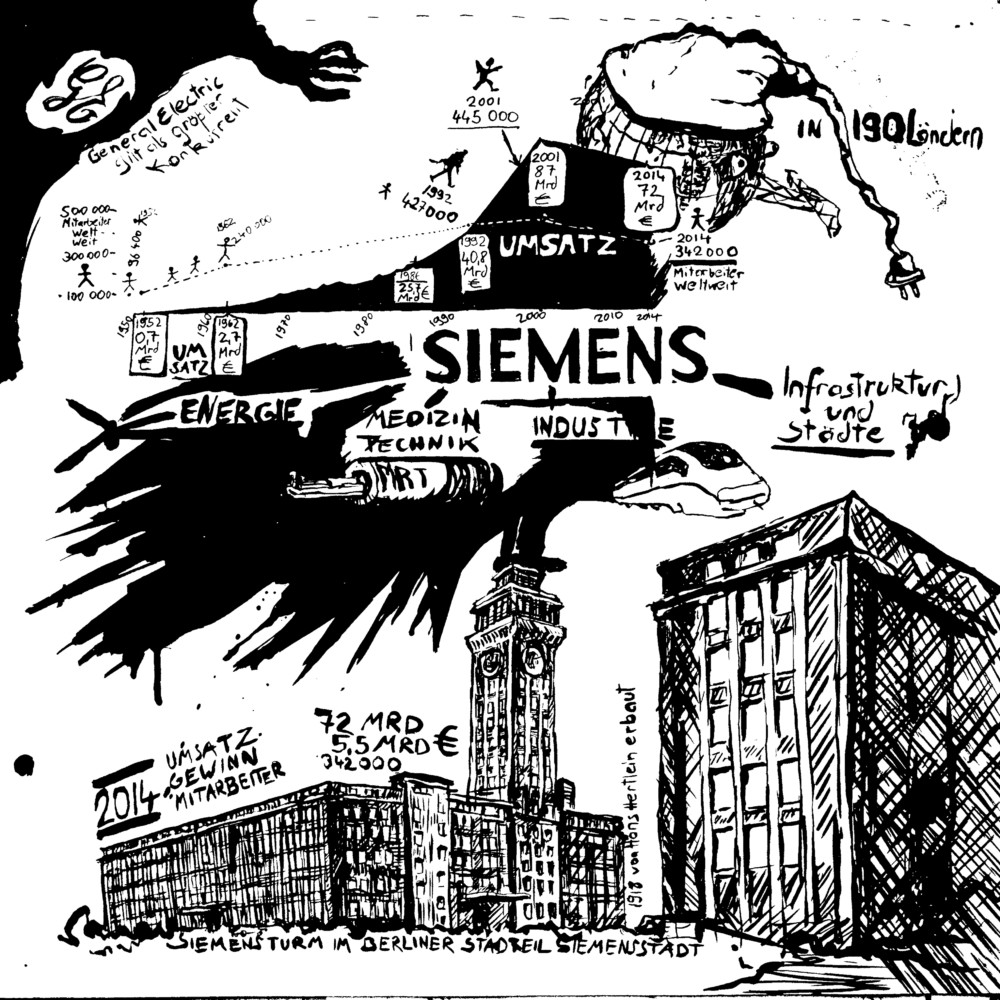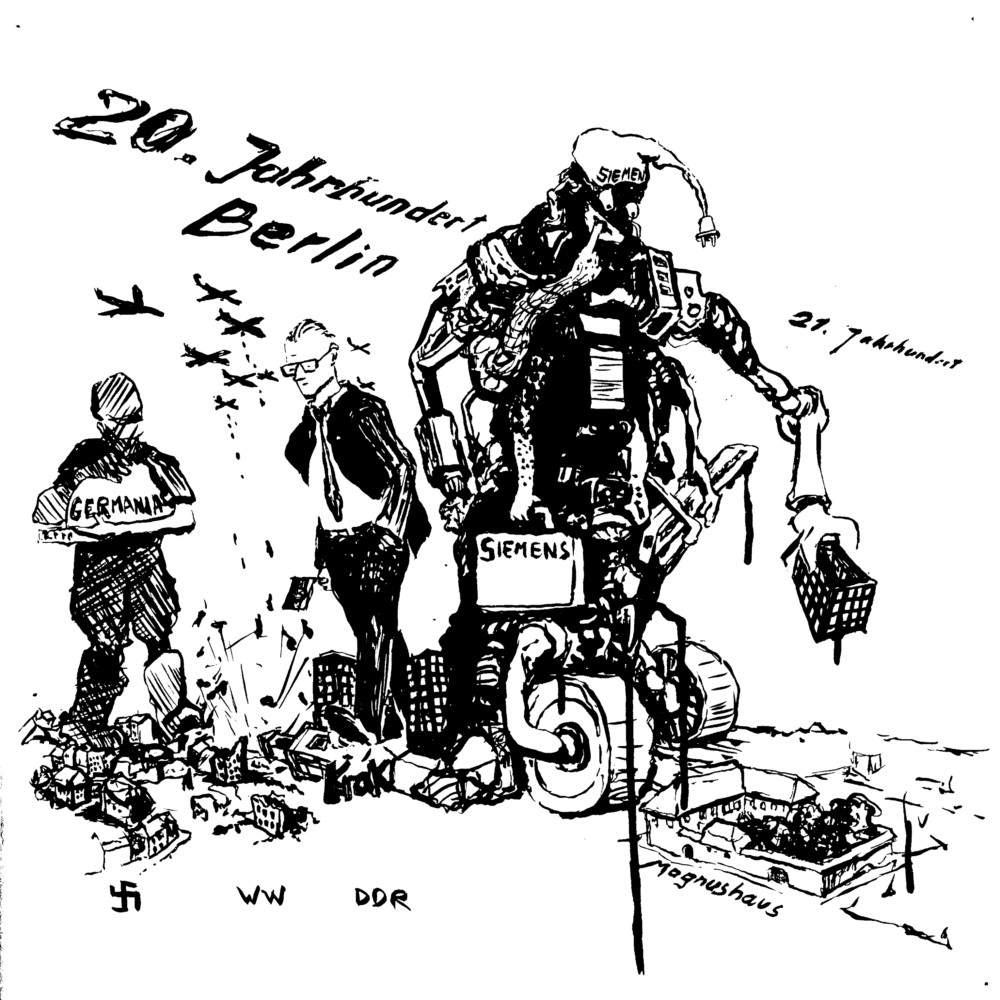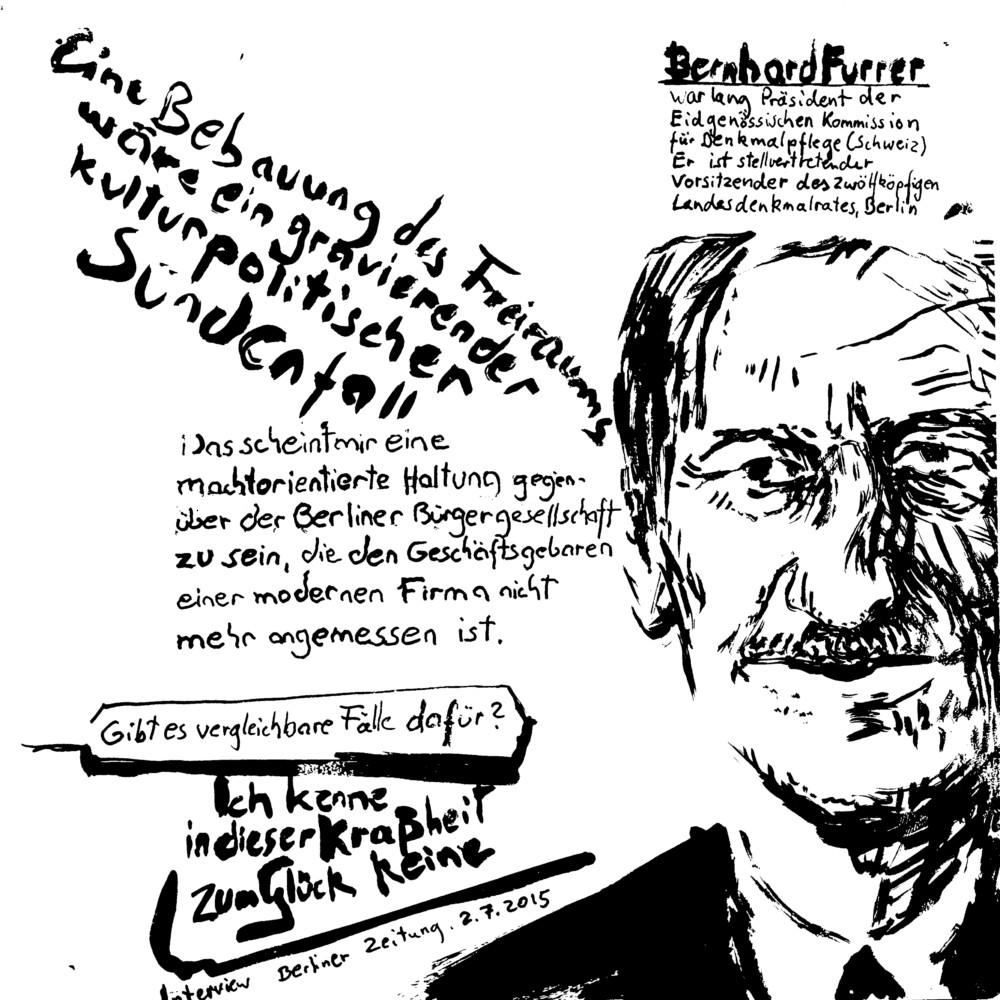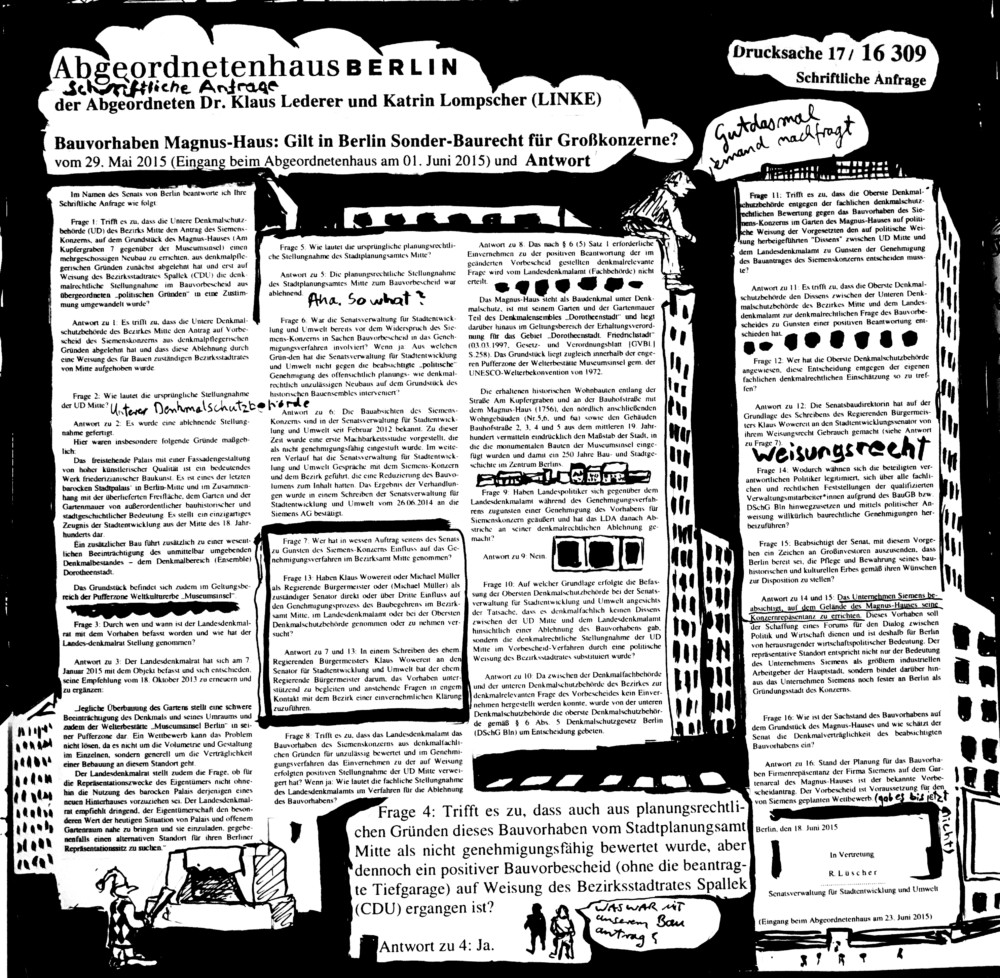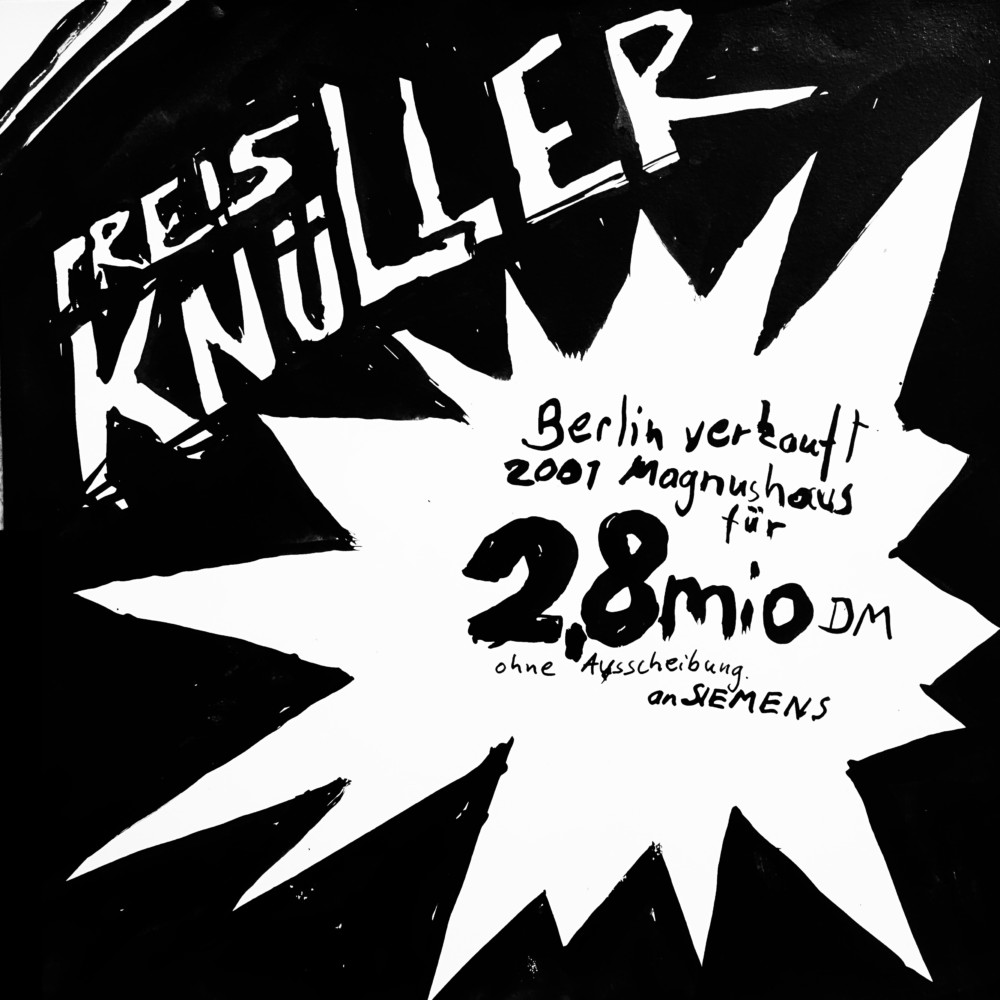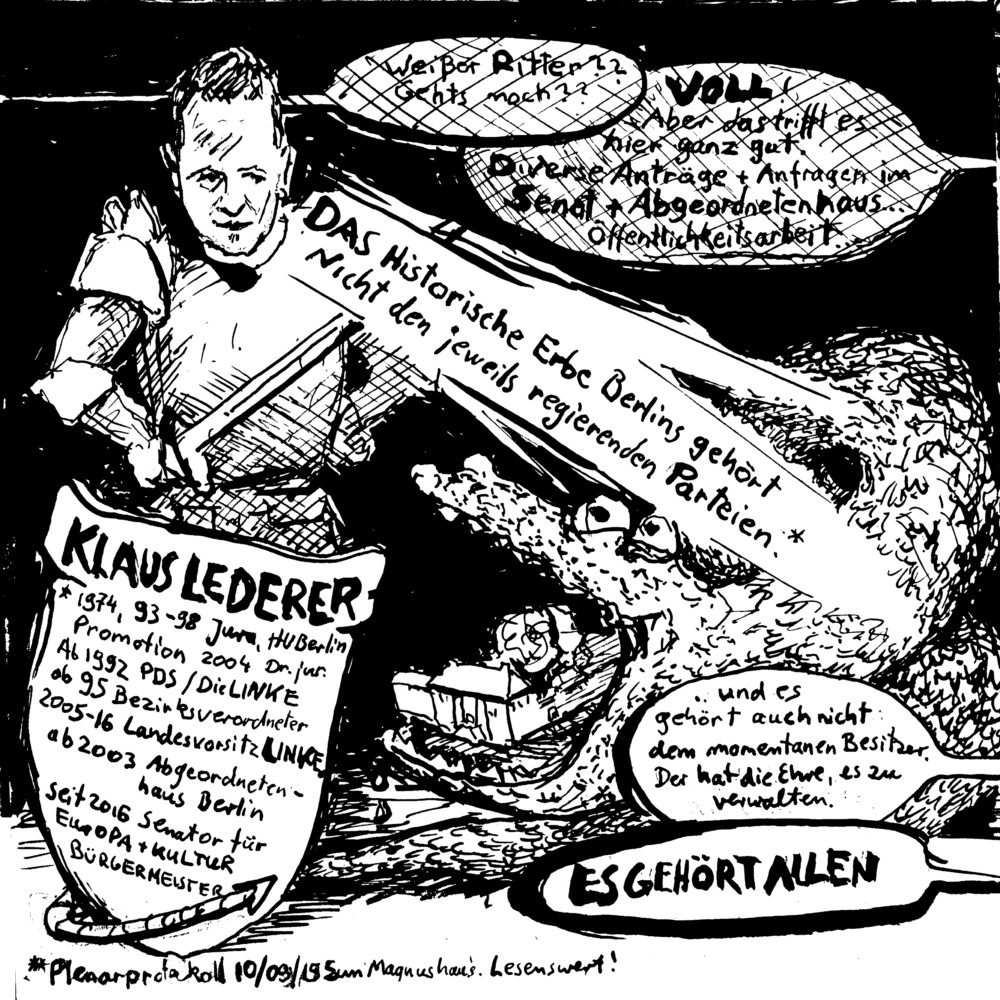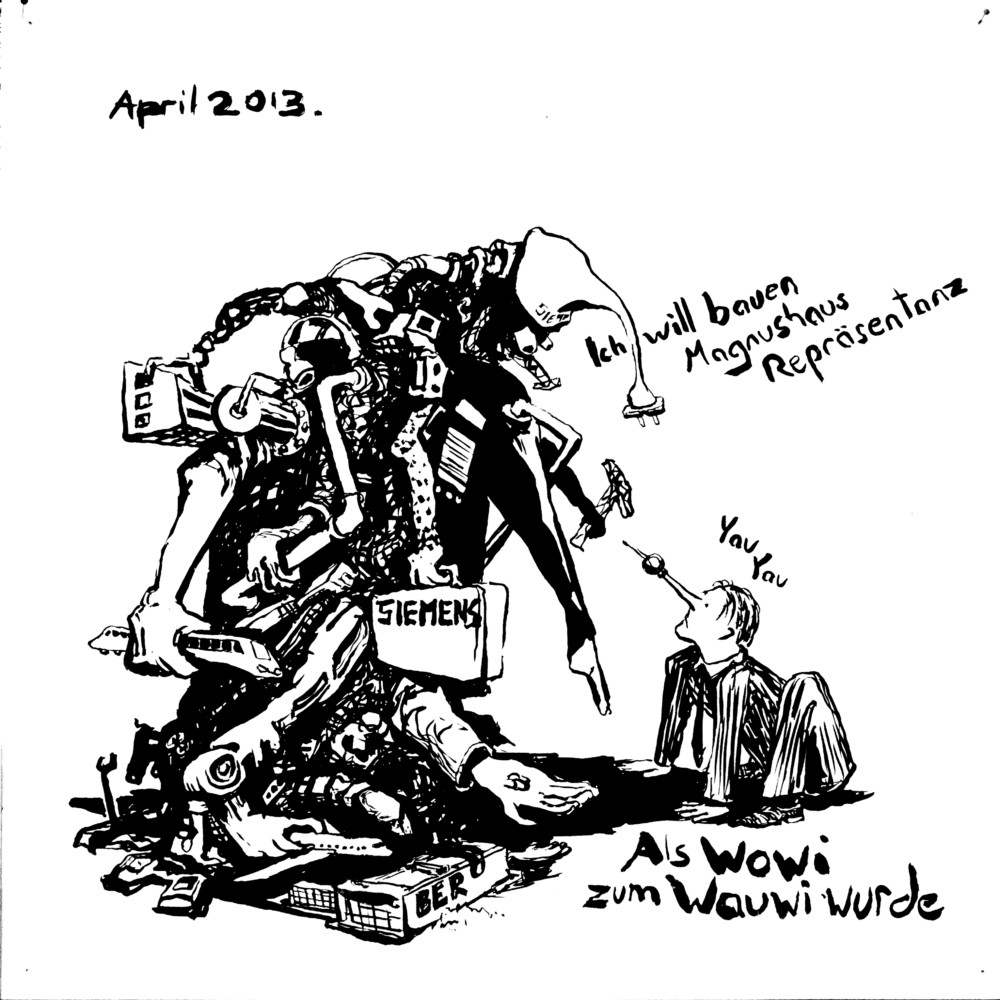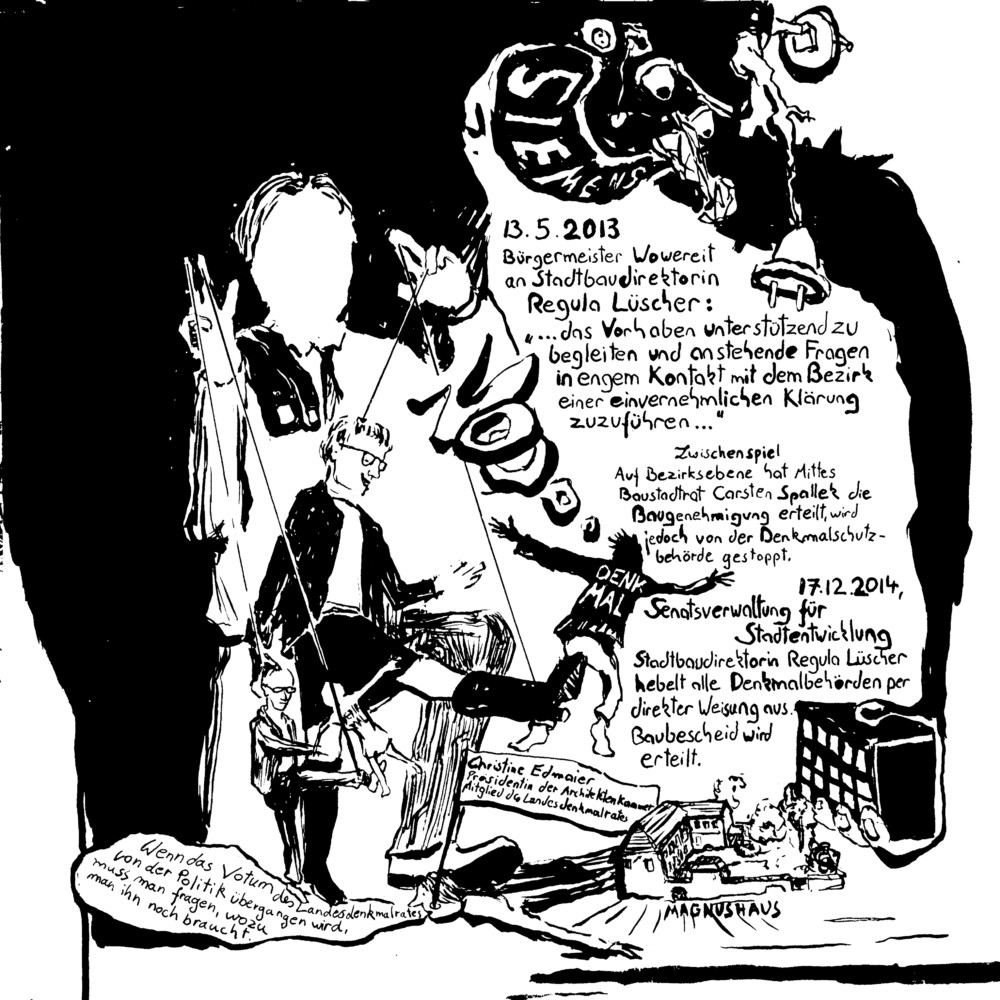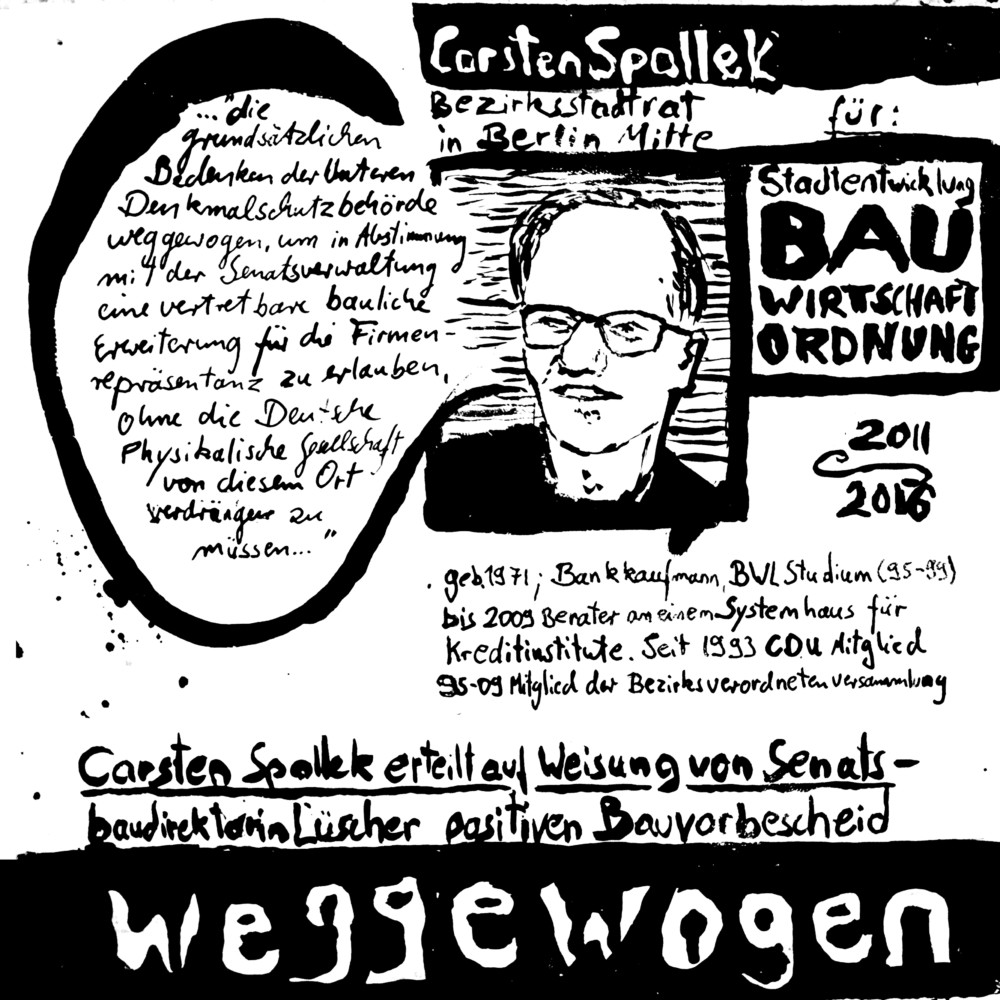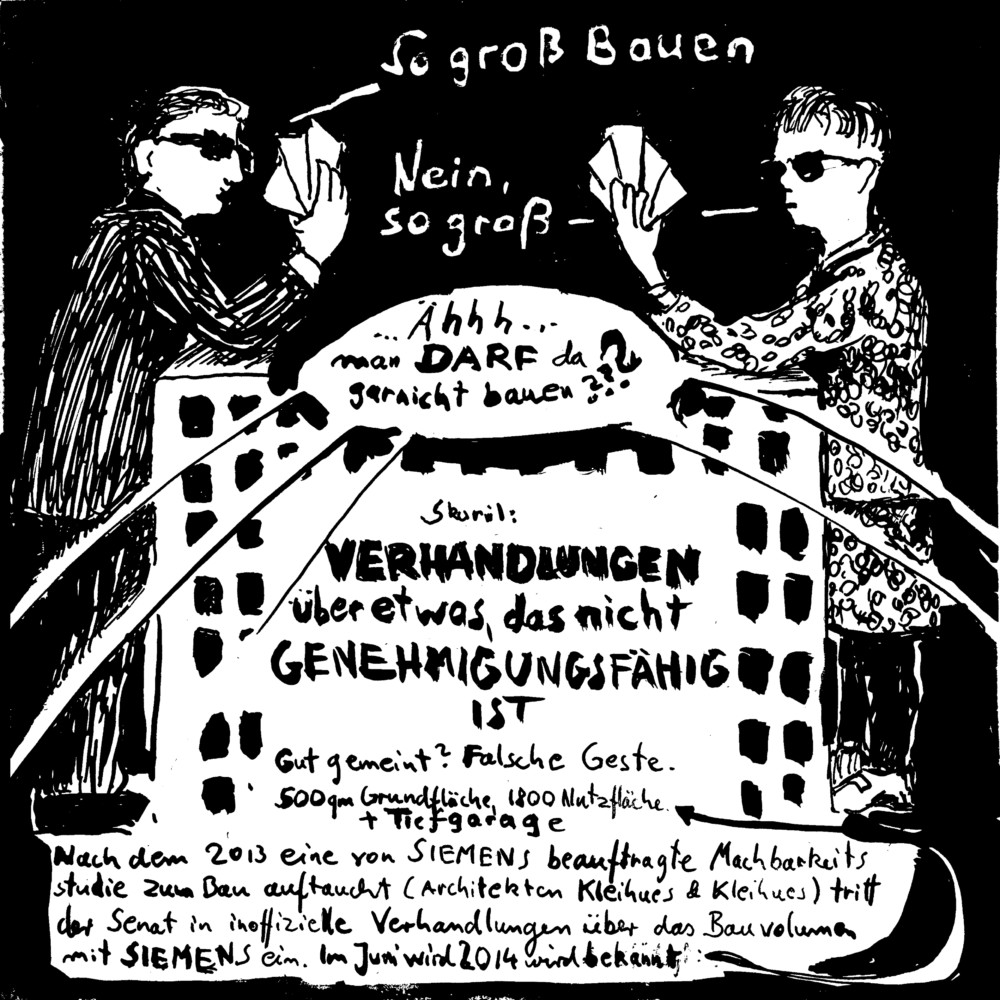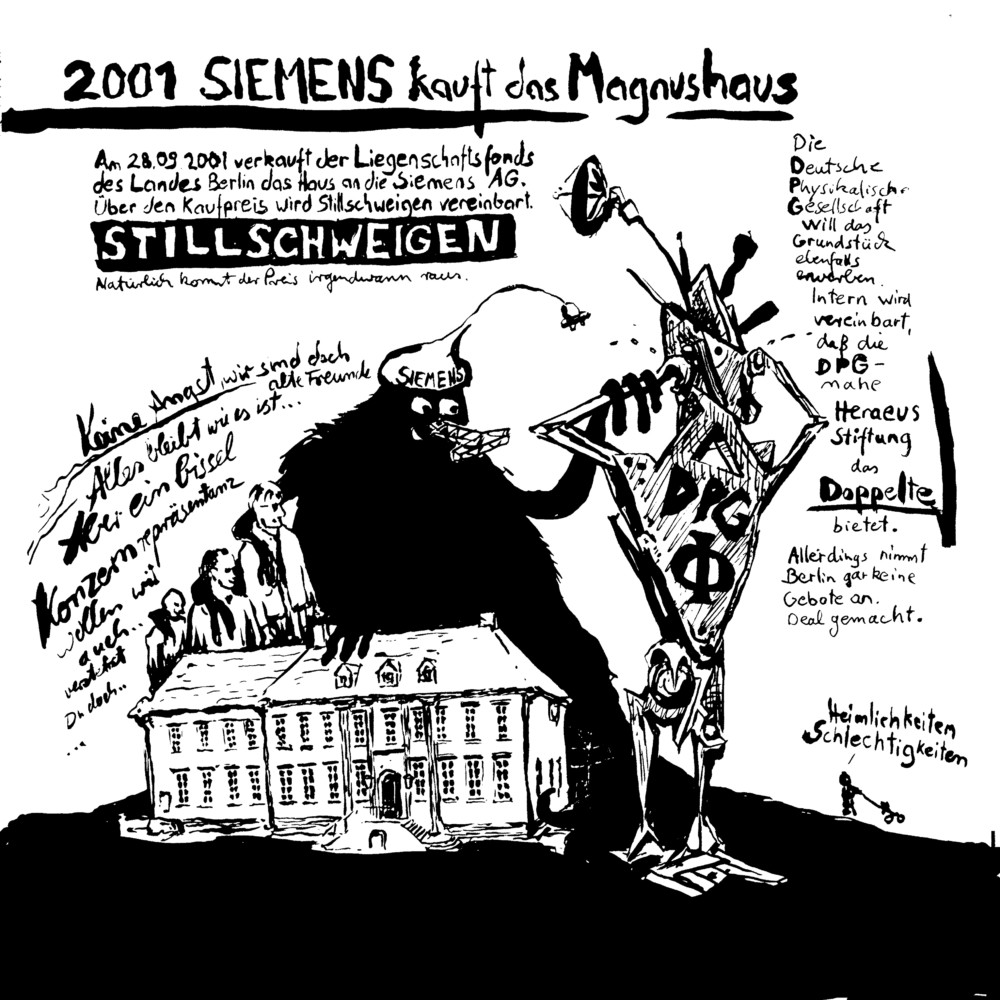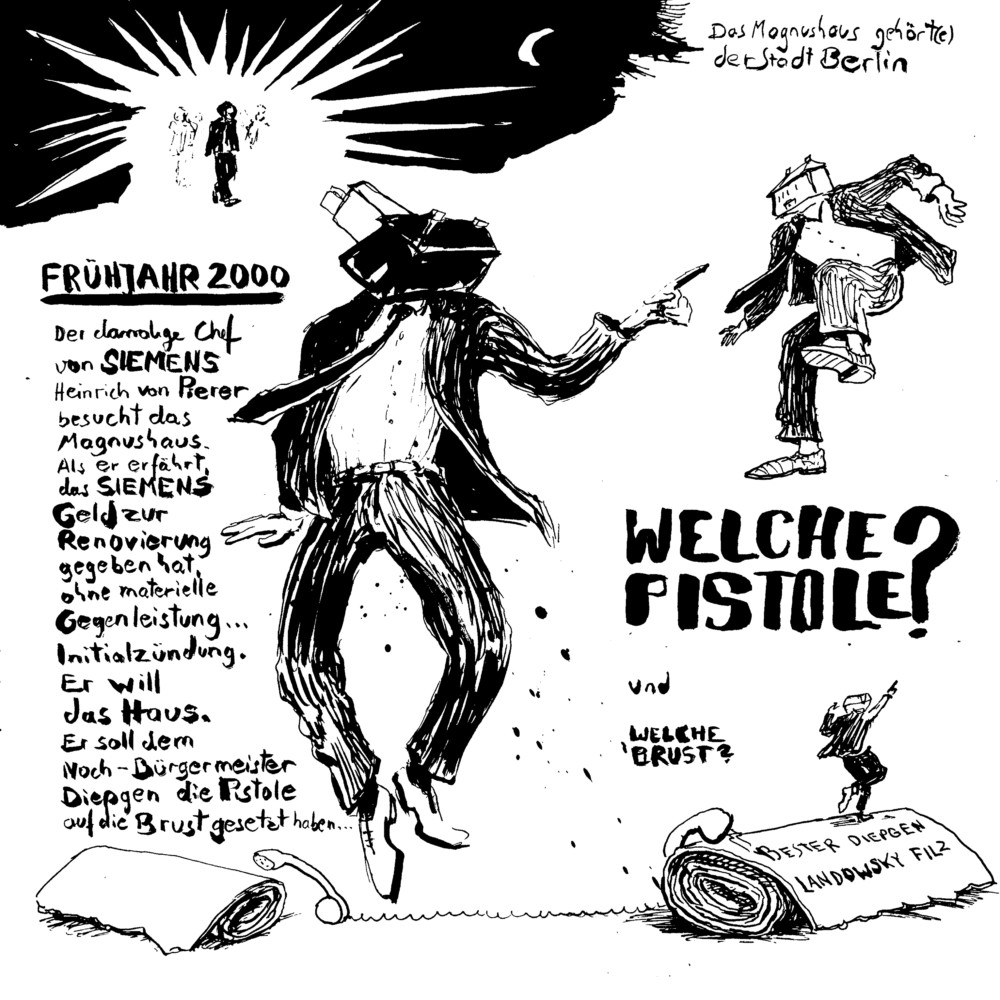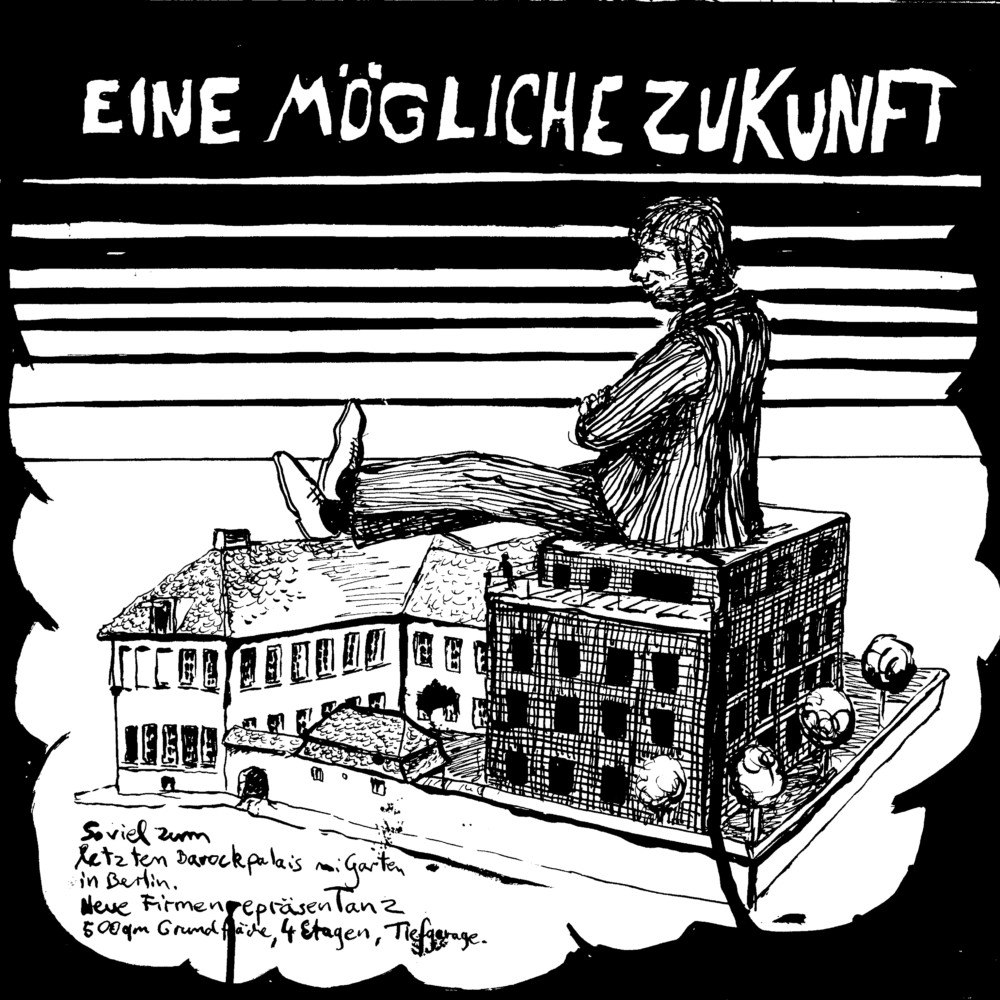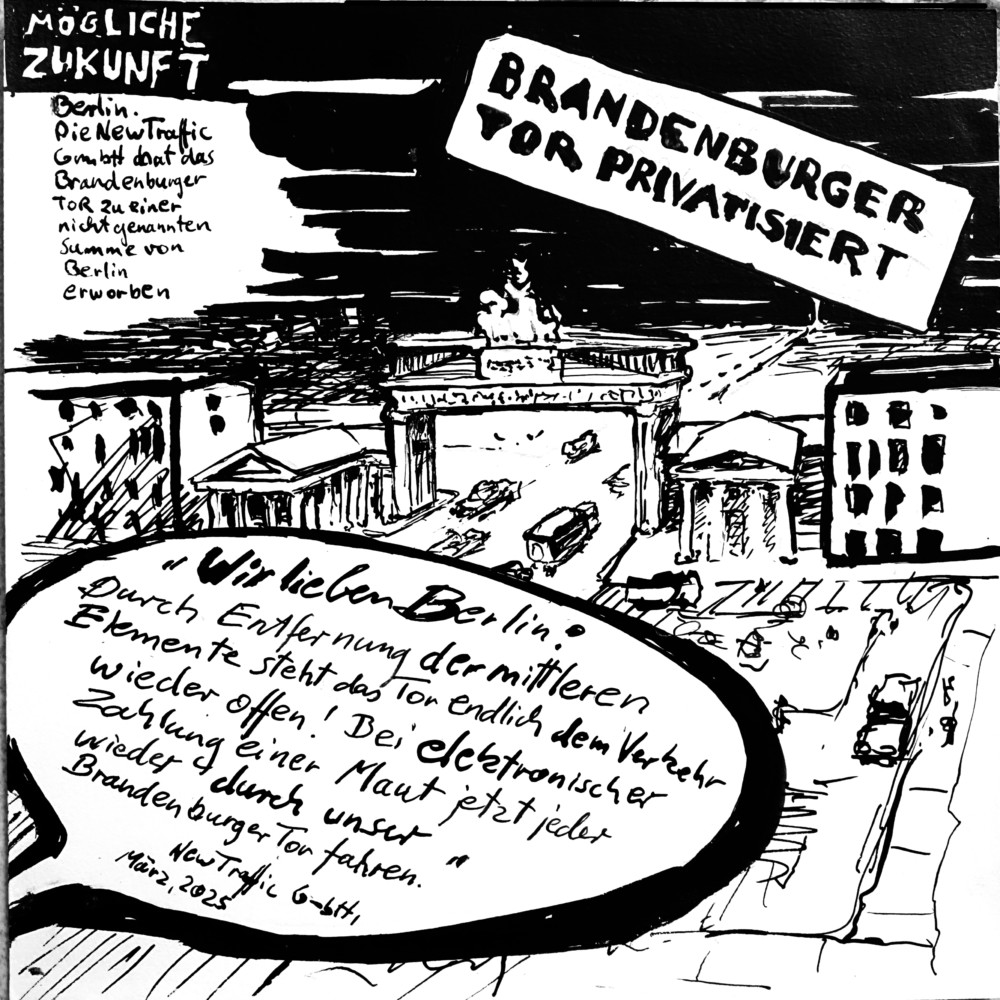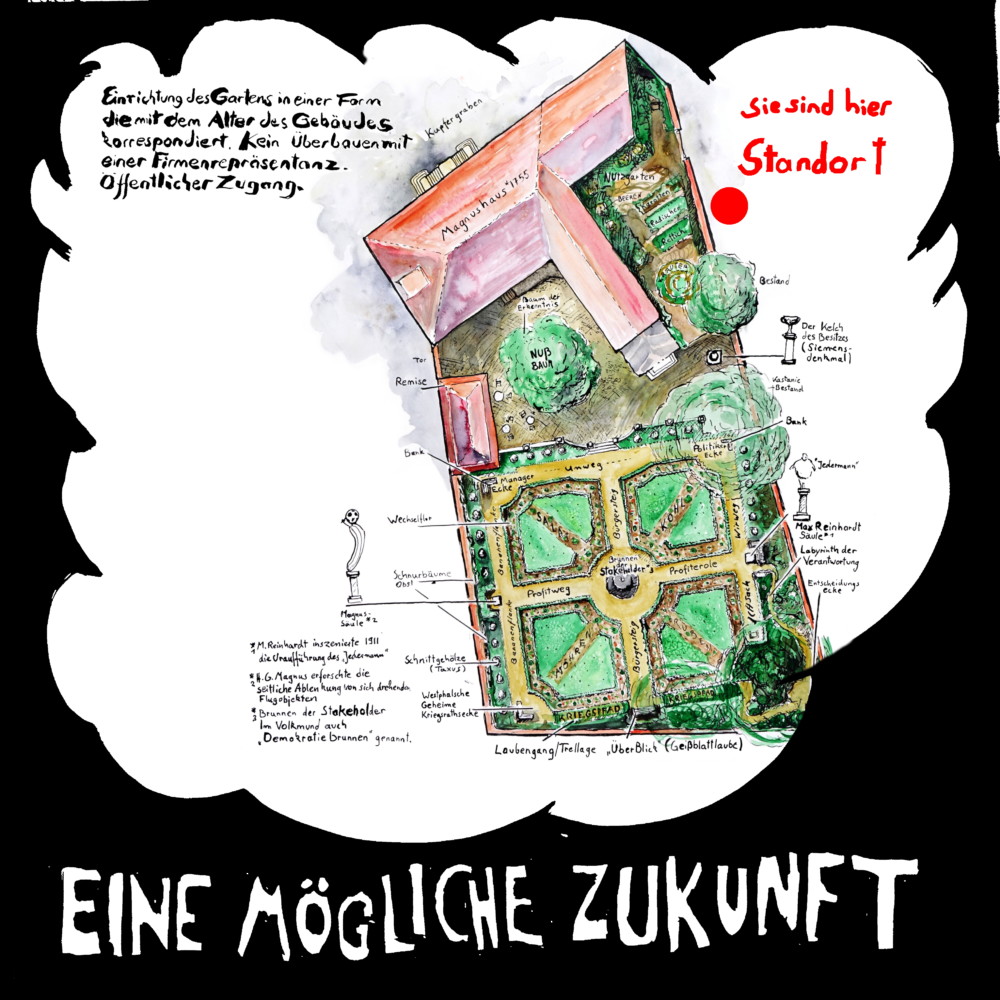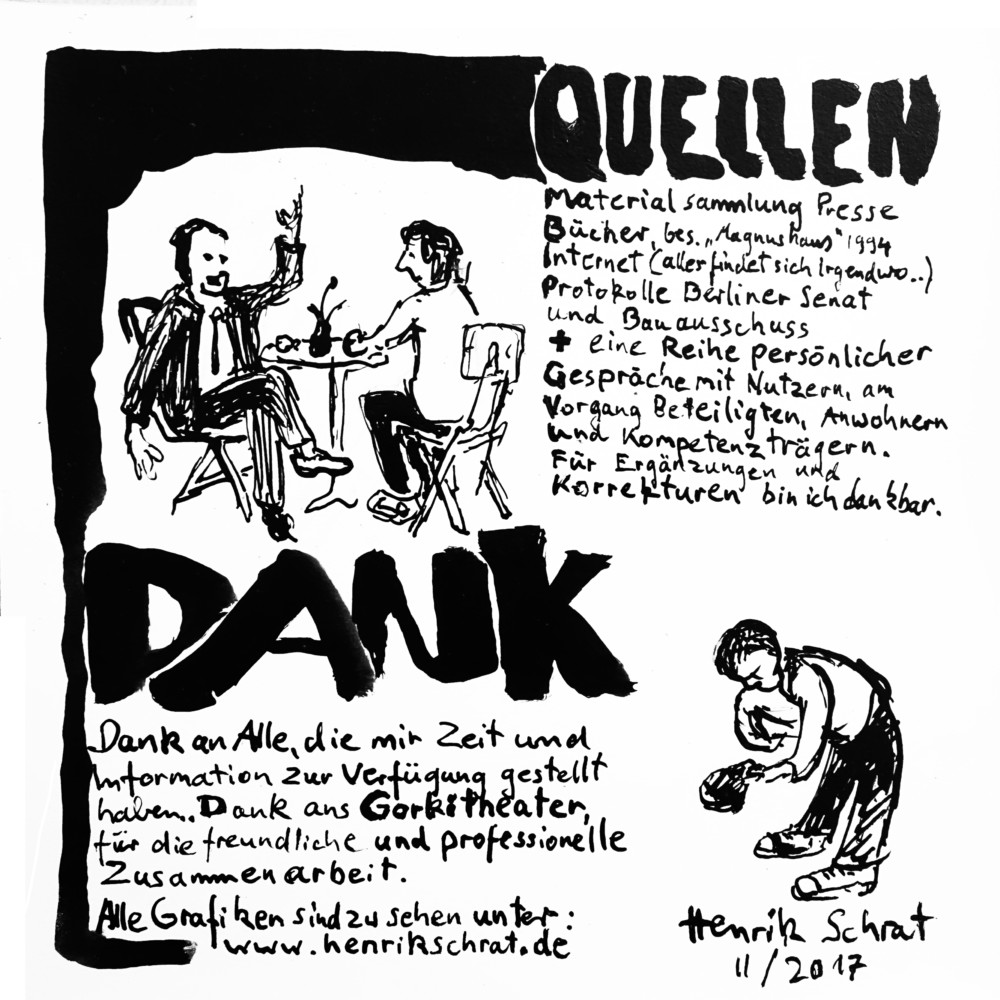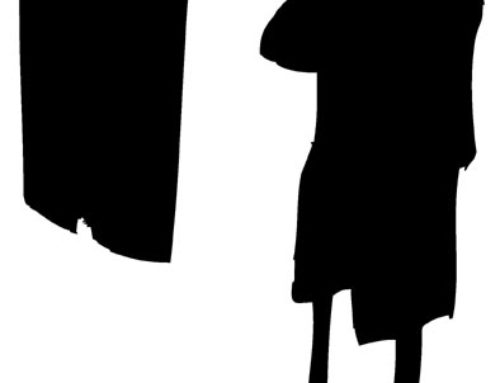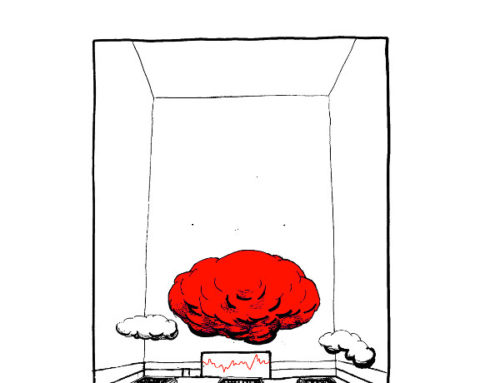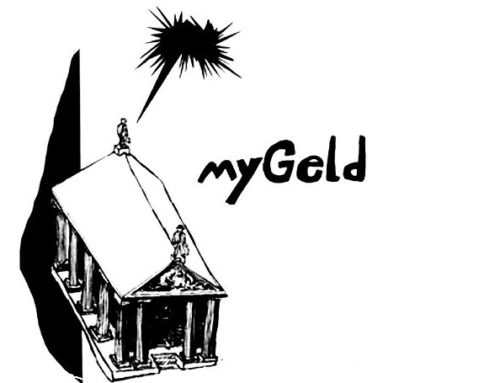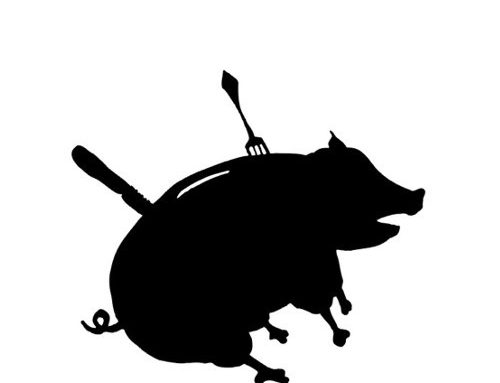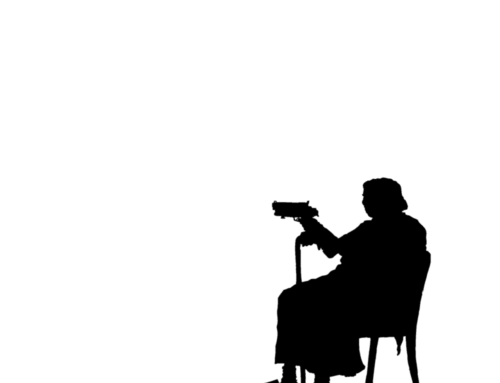Project Description
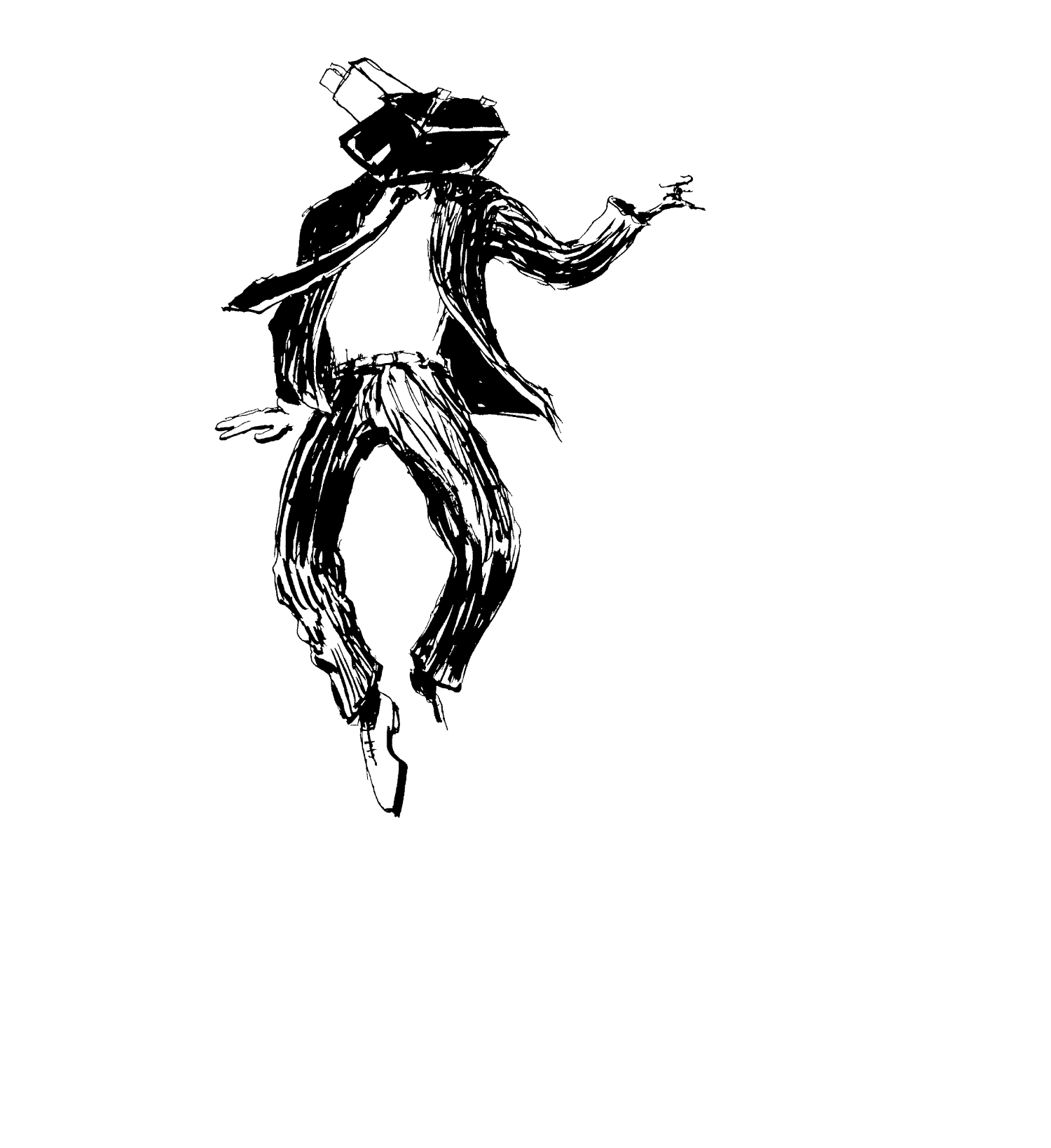
RepräsenTanz
18 Tuschzeichnungen 50 x 50cm und 26 Tuschzeichnungen 25 x 25cm.
Recherchebasiertes Projekt, das in mehreren Ausstellungen gezeigt wurde
18 ink drawings 50 x 50 cm, 26 ink drawings 25 x 25 cm.
A research – based project, which has been shown on different occasions.
Das Magnushaus steht an der Museumsinsel in Berlin.
Baudenkmal; das letzte freistehende Barockpalais mit Garten in der Stadt.
Das ist die Geschichte, wie es dazu kommen konnte, das eine Firma im Garten eine Repräsentanz bauen will. Und darf.
Siemens, das Magnushaus in Berlin, Geld, Macht, Verantwortung. Politik. Beschreibung eines Vorganges. Gorkitheater Berlin; 3. Herbstsalon; 2017 18 Zeichnungen 50×50 cm, 27 Zeichnungen 25×25 cm, Tusche, 2015-17 Appliziert auf 5 Objekte Schrat zeigt eine Grafik Novel, das Mapping einer Geschichte, die großformatig am Ort ihres Geschehens plaziert wird – dem Magnushaus hinter dem Gorkitheater. Es geht um Geschicht und den Verkauf des Grundstücks, politische Verwicklungen und den aktuellen Versuch von Siemens, im Garten dieses letzten barocken Stadpalais in Berlin die Firmenrepräsentanz zu errichten. Die Geschichte um Geschichtsvergessenheit, Arroganz und Macht bietet großartigen Stoff. Henrik Schrats fabulierende, wuchernde, fakten- und detailreichen Zeichnungen lagern Möglichkeiten und Parallelgeschichten an die recherchierte Zeitlinie und Akteure an. Die Bildgeschichte wird zum Protoyp der Beziehung zwischen urbanem Raum und den Akteuren darin, die Perspektive in die große Frage bringt: Wem gehört die Stadt?
RepresentationDance
Laberlaber Englisch
In 2007 Henrik Schrat was awarded a UNESCO Aschberg grant, and he took up a residency at Sanskriti Kendra in Delhi, India.
During his stay in India, he was interested in the role, which crafts play for the cultural self understanding in India.
The piece is called ‚Oursurcing‘, and is a picture story about an artist, coming to India, and looking for an artisan to cooperate with…
The self reflexive piece consists of 1 large and 20 small images, and a large number of words and word groups, surrounding and characterising the story. In pure technical terms, to produce this piece is a challenge, apart from the fact, that the artisans find themselves in the very pictures – and an exchange on a very personal level had to be initiated before an agreement on the production could be reached.
India as global boom country – software and service industries – on one hand and the still strong significance of manual labour on the other starts the context of Schrats project.
He searched for artisans producing wood inlay pictures. They are traditionally located in the town called Mysore, in South India, some 120 km away from Bangalore. Artisans usually don’t speak English, and so it became a quite complicated process to find partners. In the end two workshops started to produce pictures with him, and a first small series of works developed.
Those artisans have done wood inlay pictures for generations, they use nine different materials, not less and not more. The cutting technique is jigsaw and not a knife technique, the material is approximately 3 mm strong. Usually the pictures have a rose wood frame or are completely embedded into a rosewood bed.
The results of the cooperation are an intriguing mixture of cultural flavours, and as objects themselves they represent the whole context they emerged from. Manual labour versus creative labour, different buying power and life standard a producing a vibrant field they are placed in.
But the most challenging difference is the different perspective on the cooperation. On one side a self understanding from a traditional craft perspective, still with a third-world-undertone. One of the workshop had never been in touch with foreigners so far, their strong rootedness in a local but already global surrounding. Not one single electric machine in the workshop, but of course the most up-to-date mobile phone.
On the other hand for Schrat the project is part of his contemporary art practice, and a continuation of his interest in economy. He enacts on a personal, one – two – one level, what corporations do on large scale: Outsourcing. Being aware of all the connotations, rather than avoiding the context, he goes into it and seems to say: let us be fascinated by the otherness, let us all benefit in a cultural and economic way, but always lets deal on eye level with each other, that’s the only way to go with all the questions in this context.
For a European understanding they are cool and stylish objects with the full aura of the original crafts object, made in a century old tradition in south India. To fill one of the slowest possible, ultra conservative techniques – wood inlay pictures – with a comic style and contemporary art content, gives the objects a unique twist. The special finish of the pieces lets the wood look sometimes, as if it would be printed plastics: this play between artificial and authentic tops the feeling, which the objects emanate





